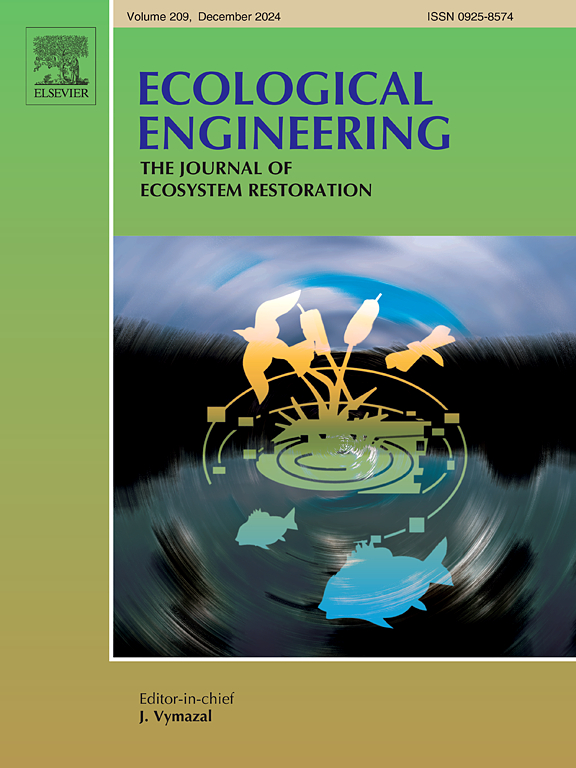克什米尔-喜马拉雅地区濒危药用植物保护的土壤和根际真菌基线研究
IF 4.1
2区 环境科学与生态学
Q1 ECOLOGY
引用次数: 0
摘要
环境中影响植物生长发育的关键因素之一是土壤,土壤测试是用来评估重要养分适宜性的化学方法之一。本研究在Gulmarg、Sonamarg、Daksum和Kashmir University Botanical Garden (KUBG)等不同调查地区采集了20个复合根际土壤样品,分析了真菌与药用植物Valeriana jatamonsi Jones、Lavatera cashmeriana L.、vereriana L.、vereriana L.、vereriana L.、vereriana L.、vereriana L.、vereriana L.、vereriana L.、vereriana L.、vereriana L.、vereriana L.的相关性以及pH、电导率、盐度、土壤水分、有机碳和大量营养元素(P、K、N)的理化性质。结果表明,与这些植物根际有关的真菌有28种,且在不同的调查地点和季节存在显著差异。土壤pH、电导率、盐度、土壤水分、有机碳、磷、钾、氮等化学参数也发生了显著变化,直接影响了与这些植物相关的真菌多样性。高原土壤(如Gulmarg、Sonamarg和Daksum)的土壤样品呈酸性,而低地土壤(KUBG)的土壤样品呈中性至微碱性。每种土壤都有高水平的有机碳和中等水平的钾、磷和可接近的氮。克什米尔山谷是多种药用植物的家园,但人们对与这些植物有关的真菌知之甚少。因此,本研究旨在更好地了解天然真菌菌群在特定土壤环境下调节微生物宿主关系、改善土壤结构、提高植物抗逆性、改善养分和水分吸收、协助养分循环和目标植物生理等方面的作用机制。同时,本研究也可为将来通过适当的土壤改良剂对濒危药用植物进行人工栽培和保护提供参考。该研究将解决与其他药用植物相关的土壤真菌的关键鉴定,一些新真菌可用于对病原真菌的抗生素或抗菌特性。本文章由计算机程序翻译,如有差异,请以英文原文为准。
Baseline study of soil and rhizospheric fungi for the conservation of threatened medicinal plants in Kashmir Himalaya
One of the key elements of the environment that influences how plants grow and develop is the soil and soil testing is one of the chemical methods used to assess the appropriateness of vital nutrients. In this study, a total of twenty composite rhizospheric soil samples were collected from different surveyed areas such as Gulmarg, Sonamarg, Daksum, and Kashmir University Botanical Garden (KUBG) and were analyzed for the fungal association and physiochemical properties such as pH, electrical conductivity, salinity, soil moisture, organic carbon, and macronutrients (P, K, N) with the medicinal plants Valeriana jatamonsi Jones, Lavatera cashmeriana L., and Artemisia absinthium L. Results revealed that twenty-eight fungi were found associated with rhizosphere of these plants and showed significant variation across different surveyed sites and seasons. Likewise, chemical parameters such as soil pH, electrical conductivity, salinity, soil moisture, organic carbon, Phosphorus, potassium and nitrogen also showed significant variation which directly affected the fungal diversity associated with these plants. While soil samples from high-land soils (such as Gulmarg, Sonamarg and Daksum) were acidic, those from low- land soils (KUBG) were neutral to slightly alkaline. Every soil had a high level of organic carbon and a medium level of potassium, phosphorus, and accessible nitrogen. The Kashmir Valley is home to a wide variety of medicinal plants, but little is known about the fungi that are associated with these plants. Therefore, the present study was done in order to better understand the mechanism of native mycoflora's role, which is essential in regulating the microbial host relationship, improving soil structure, increasing plant stress tolerance, improving nutrient and water uptake, aiding in nutrient cycling, and physiology of the target plant species in a particular soil environment. Also, the current study may serve as a baseline for the artificial cultivation and protection of the tested endangered medicinal plants by applying the correct soil amendments in the near future. The study will address the critical identification of soil fungi associated with other medicinal plants and some of the new fungi can be used for their antibiotic or antibacterial properties against pathogenic fungi.
求助全文
通过发布文献求助,成功后即可免费获取论文全文。
去求助
来源期刊

Ecological Engineering
环境科学-工程:环境
CiteScore
8.00
自引率
5.30%
发文量
293
审稿时长
57 days
期刊介绍:
Ecological engineering has been defined as the design of ecosystems for the mutual benefit of humans and nature. The journal is meant for ecologists who, because of their research interests or occupation, are involved in designing, monitoring, or restoring ecosystems, and can serve as a bridge between ecologists and engineers.
Specific topics covered in the journal include: habitat reconstruction; ecotechnology; synthetic ecology; bioengineering; restoration ecology; ecology conservation; ecosystem rehabilitation; stream and river restoration; reclamation ecology; non-renewable resource conservation. Descriptions of specific applications of ecological engineering are acceptable only when situated within context of adding novelty to current research and emphasizing ecosystem restoration. We do not accept purely descriptive reports on ecosystem structures (such as vegetation surveys), purely physical assessment of materials that can be used for ecological restoration, small-model studies carried out in the laboratory or greenhouse with artificial (waste)water or crop studies, or case studies on conventional wastewater treatment and eutrophication that do not offer an ecosystem restoration approach within the paper.
 求助内容:
求助内容: 应助结果提醒方式:
应助结果提醒方式:


